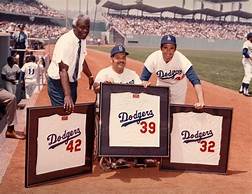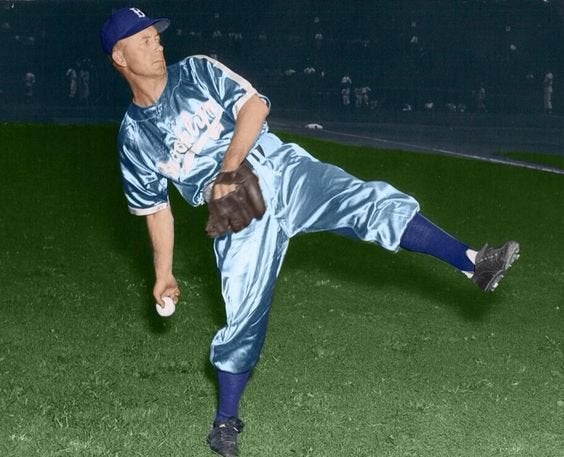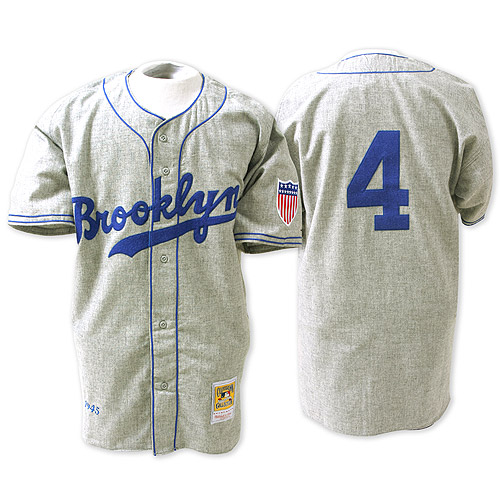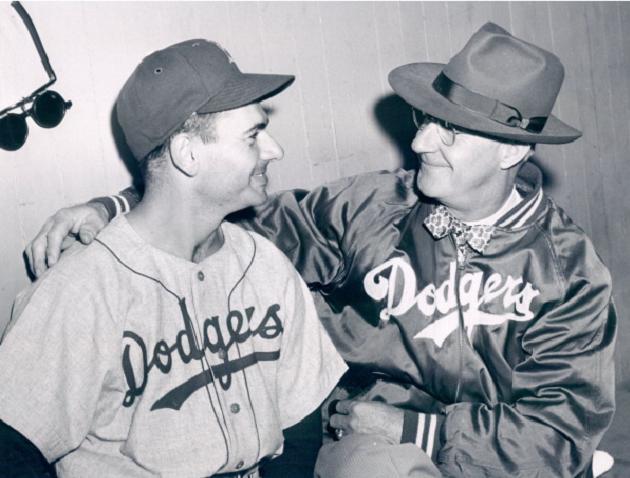Most of us who have been Los Angeles Dodgers Jerseys for years have loved the classic look of the Dodger uniform. Next to the Yankee pinstripes, it is probably one of the more iconic uniforms in sports. Football uniforms and basketball uniforms have morphed a lot over the years, but baseball jerseys usually keep their team’s traditions. Even the Rams horns have changed drastically on the Rams helmets.
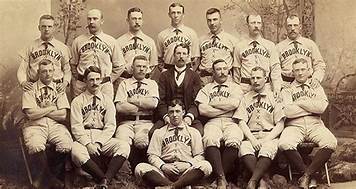
The 1890’s version of the Dodgers. The Brooklyn Bridegrooms, so named because so many of the players had recently married. Notice that they have collars on them, and they are laced up the front ending in what looks like a string tie. High knee stockings. Too bad they did not have color photography back then. Have no idea what color the lettering was. The guy in the suit is manager, Bill McGunnigle.
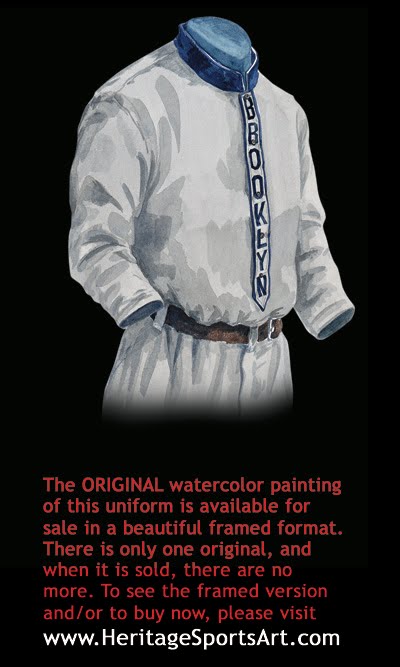
By 1910 the look had changed quite a bit. No lacing up the front. Buttons were concealed by the flap reading Brooklyn horizontally. They were no longer the Bridegrooms, but rather the Superbas, coined by sports writer after a popular Vaudville troupe of the day. In 1911, they became known as the Trolley Dodgers, due to the preponderance of trolley cars in Brooklyn one had to dodge on a daily basis. That was shortened to simply Dodgers in 1912. When Wilbert Robinson took over in 1914, they were called the Robins. But they were also called the Dodgers. This was the case until Robbie left in 1931. You might notice that the belt buckle is off to the side. Players of this era wore it like that to prevent injury. Also, despite having buttons, this is a pullover-type jersey. They were around until 1939 and then returned in the ’70s.
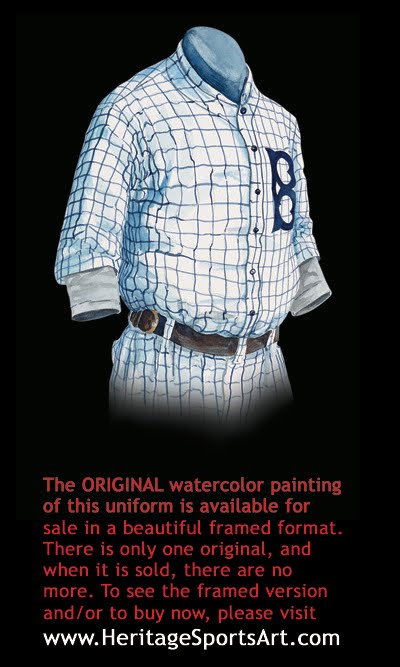
In 1916 the team adopted this plaid version. The plaid was blue in color and had the large classic Brooklyn B on the left side of the chest. The jersey was used both at home and on the road in 1916, but then simply on the road in 1917. This patriotic jersey with the American flag and pinstripes was used at home in 1917.
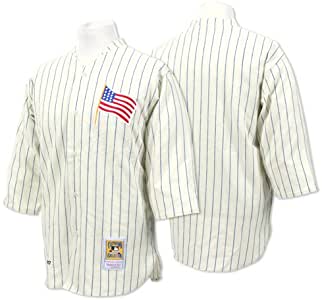
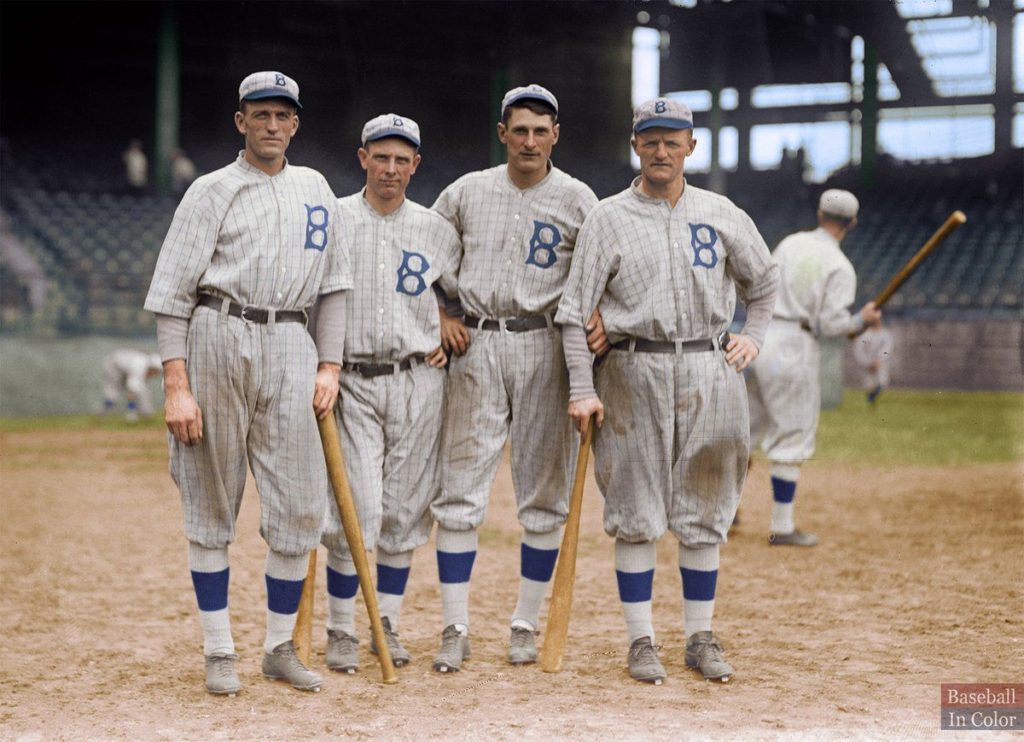
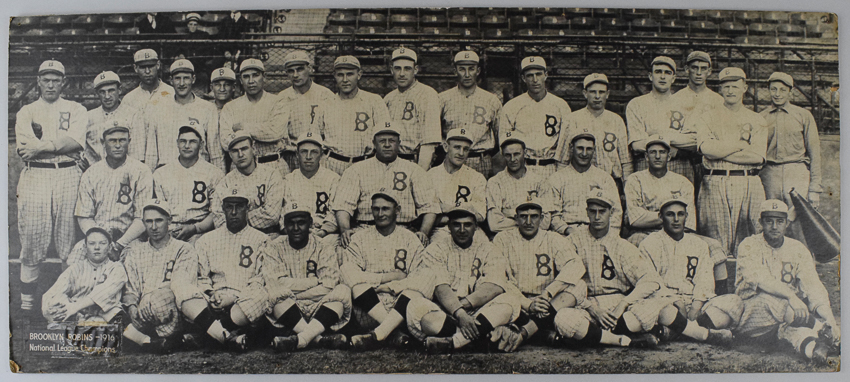
This road uniform using red piping was used for only one season. I think the red is pretty cool. You have double piping up the front and around the neckline and also on the belt loops and the trouser leg. Babe Herman was the highlight reel guy in 29 batting .381.
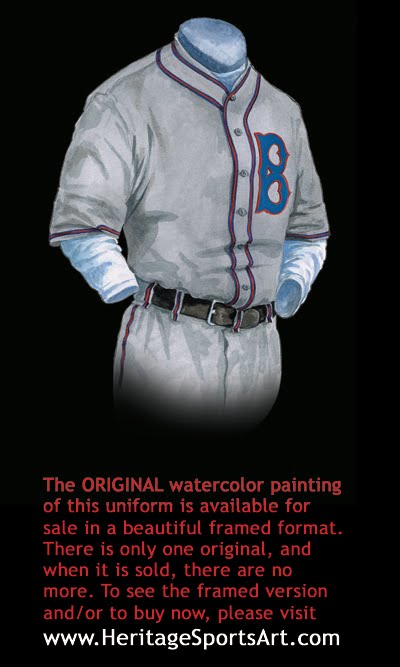
For the first time, Dodgers is across the chest. Classic Brooklyn B on the sleeve and there are pinstripes. Blue piping on the front and around the neckline. This was not the first time they had used pinstripes. They had worn them first in 1911 and would be on and off for the next 25 years. Also interesting is the fact that Dodgers was on both home and road, and then the next year disappeared until 1938.
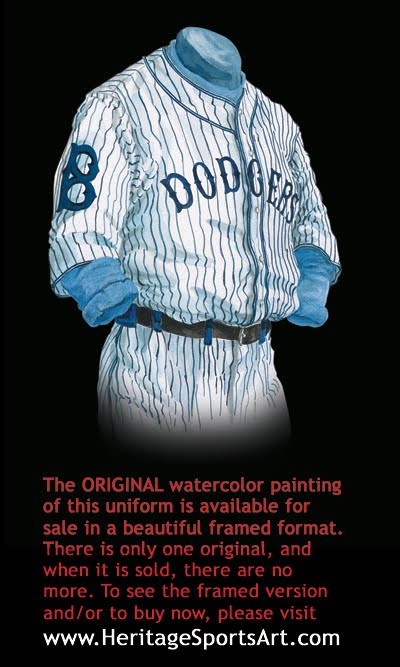
This uniform lasted a year or so. Red piping on the front and around the block lettered Brooklyn.

Drastic change as Dodger blue became Dodger green. The grey of the road uniform was replaced with a tan color. Glad this one only lasted one year.
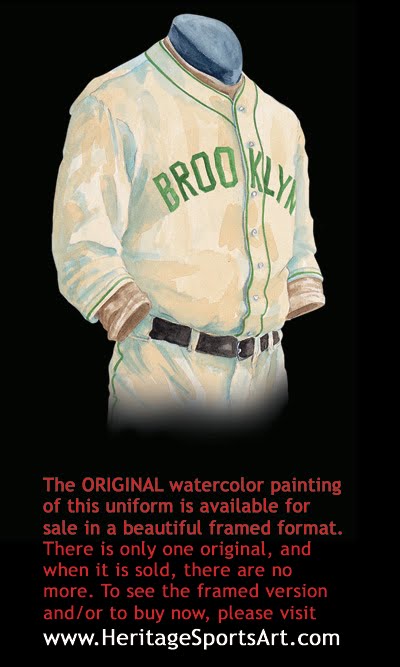
Babe Ruth joined the Dodgers as a coach in 1938. He was under the impression he would be given a chance to manage down the road, but it was not to be. The classic Dodger look was just starting. This color combination would be the norm from 38 on with some tweaks. This uni sold for $310,000 at auction in the 2000s. The cap at the time was white with stripes and a blue visor. Soon it would be its basic blue with the white B.
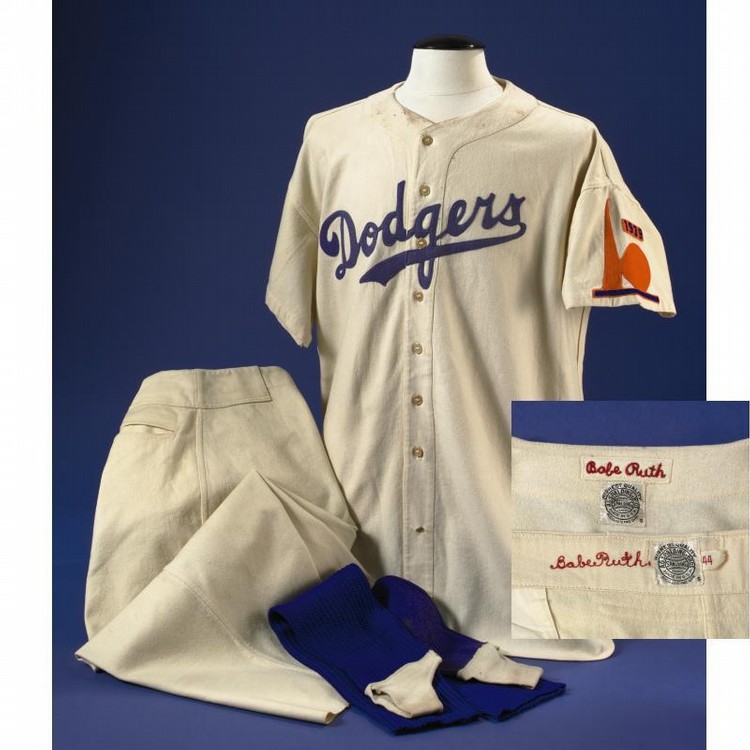
When they began playing night games in 1938, execs were convinced that a reflective material like this satin uniform, used only in night games, would allow fans to better see the players at night. This uniform made of satin was only used in 1944. Notice the swoosh underlining Brooklyn. The Dodgers began doing that with their home uniforms in 1938 and it has been there ever since. By far the longest of any team doing that. The Dodgers wore a throwback version of this uniform at home in 2011.
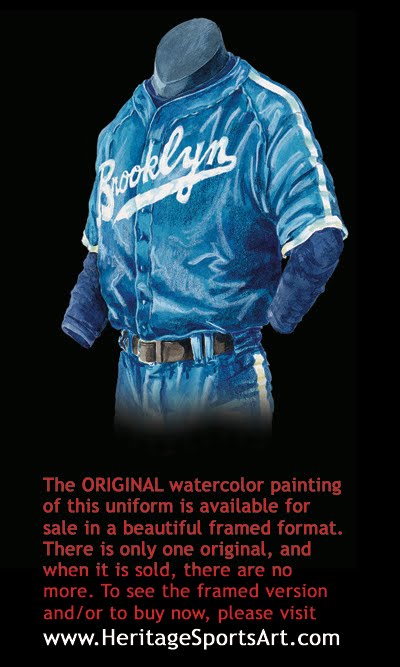
Wartime jerseys had very few changes. The 45 road jersey was grey and read Brooklyn on the chest. Most uniforms during the war had some sort of patch on them. Although you cannot see it, a stars and stripes patch is on the left sleeve. It would be 2 years before Jackie broke the color barrier.
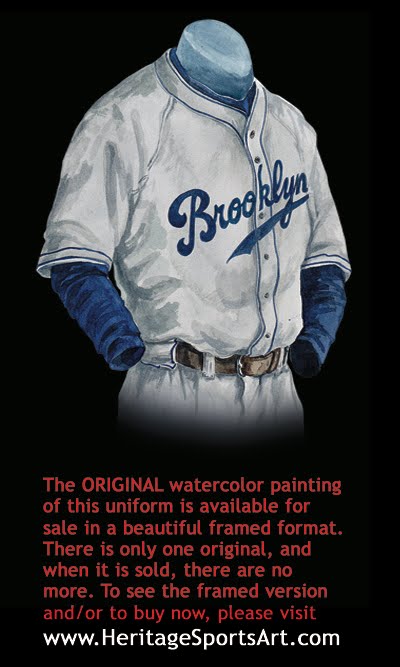
The Dodgers started wearing red numerals on the front of the jersey in early 1952. That same look is with us today. This is the beginning of the classic Dodger uniform. This is the version they wore winning their first World Series in 1955. The Dodgers were the first team to wear numbers on the front of their uniforms.
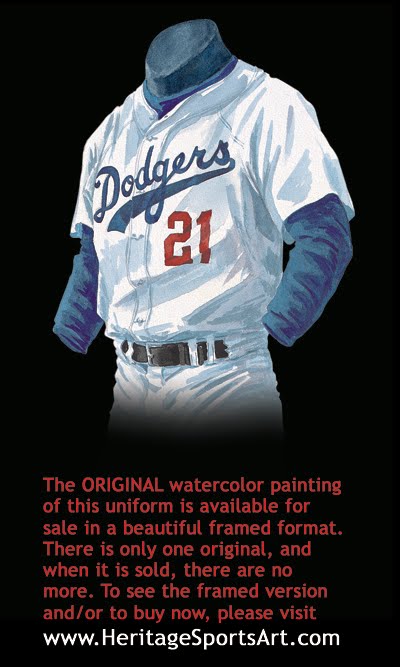
The team moved to Los Angeles in 1958. But the uniform stayed true to its roots. The road uniforms now read Los Angeles instead of Brooklyn. In 1959 they won their first Championship in LA in their second year. It took them 65 years to do it in Brooklyn.

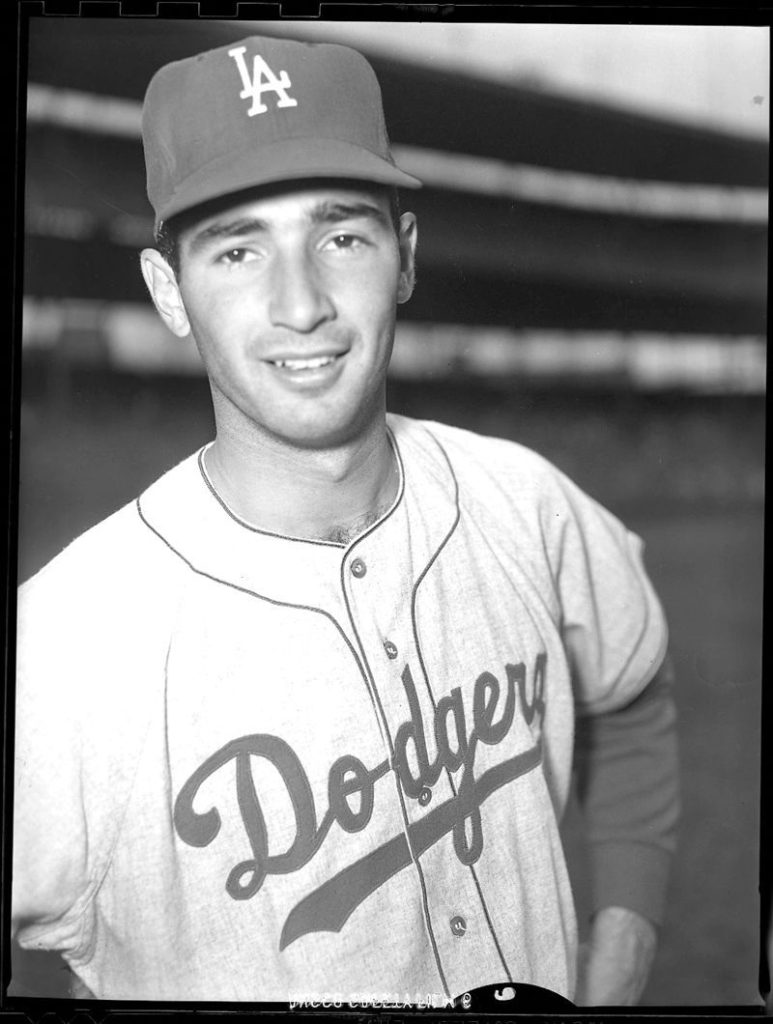
For a short time in the early ’60s, the Dodger minor league players wore letters instead of numbers. I would think this would get pretty confusing.
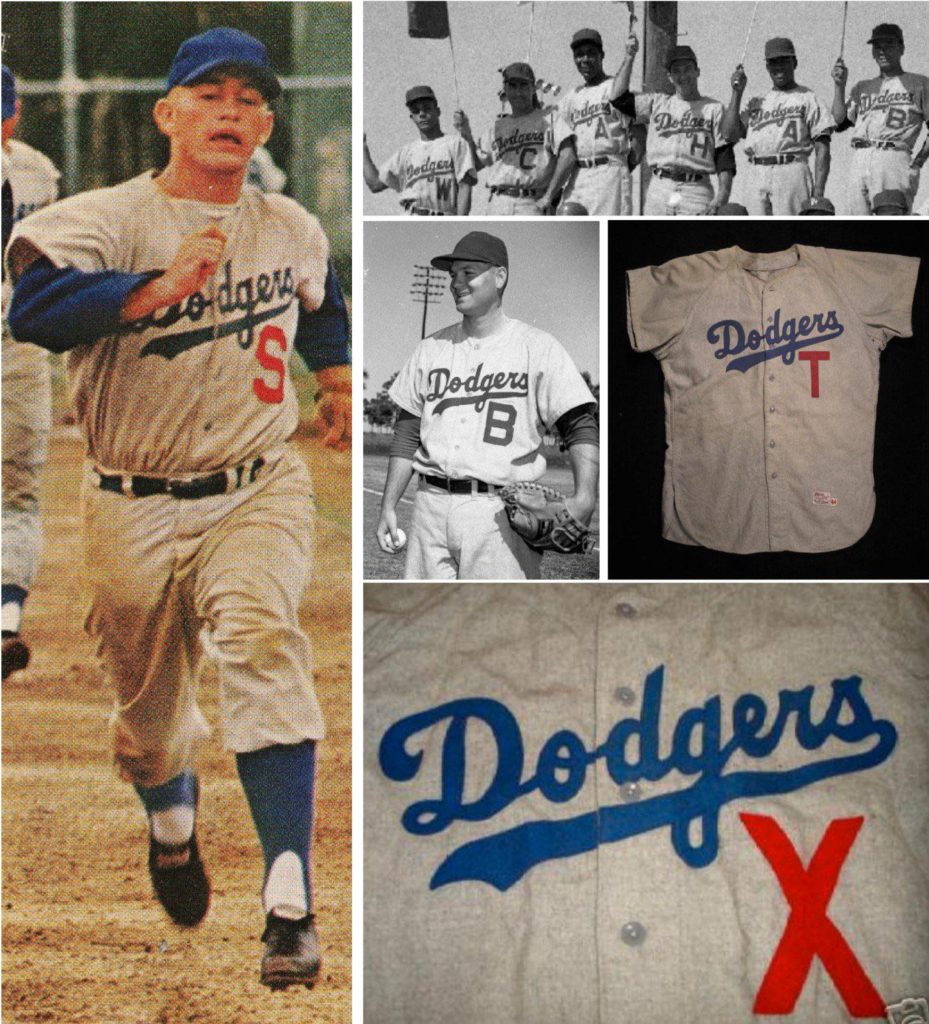
The Dodgers went to a more simplified design in 1965 removing the piping in the front and around the collar. Must have been the right move since they beat the Twins in the World Series for their 3rd LA title.
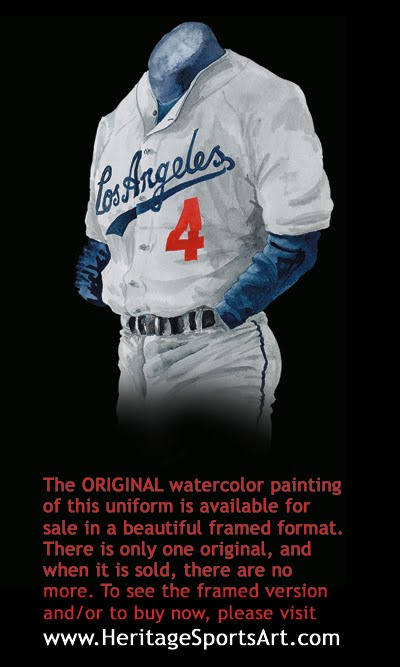
Little change since they first added numbers in the front in 1952. What is noticeable about the uniform is what it is not. It is not the double knit pullover-style jersey that most teams adopted in the ’70s. The elastic waist is not there. That eliminated the need for a belt. It should be known that only the Yankees and Dodgers did not adopt those uniforms. LA it seems began wearing the players’ names on the backs of the uniforms in 1972.
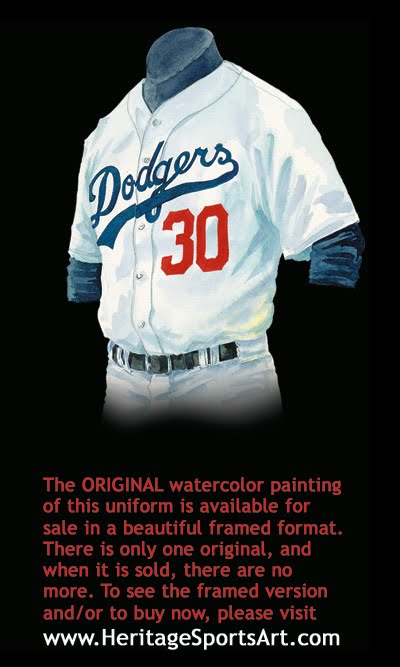
A very subtle change in the 88 road uniform. Striping on the sleeve and also around the Dodgers script. Another uniform was worn by a World Series winner. It would be the last one for a long while.
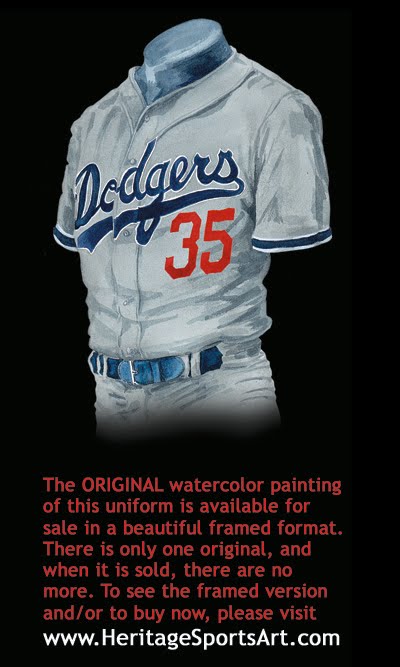
Patch on the left shoulder signifies the 50th anniversary of Robinson breaking the color barrier. They still had the player’s names on the back, but that would change for a few years under McCourt when he had the names removed. It was also the last season of the O’Malley family’s ownership. In March of 1998, O’Malley sold the team to Fox ending 50 years with the team.
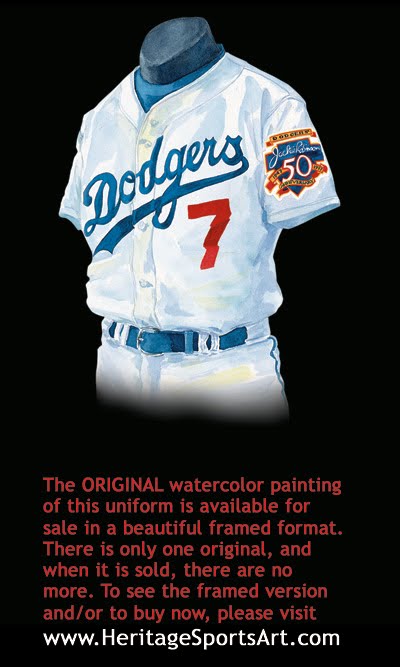
Alternate or 3rd jersey. Many teams started doing this and would use them on special occasions. Dodgers would wear this at home or on the road. It did not last long, they went back to traditional uniforms and only use blue jersey’s now during spring training. Patch commemorates the 40th season in LA.
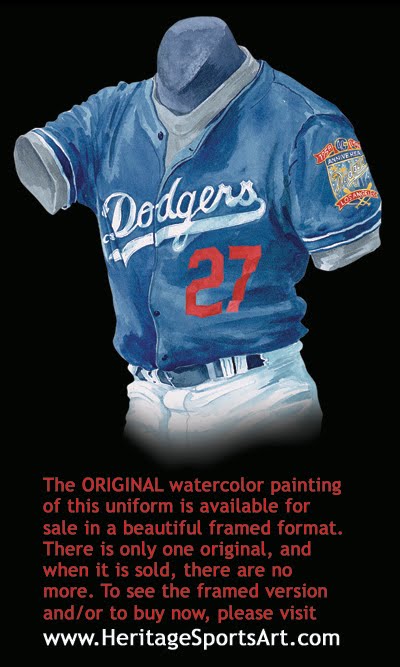
Notice the addition of LA to the right sleeve of the road jersey. On the 99 jerseys, the patch on the left sleeve was to honor some Dodger legends who were recognized during the season. There were 18 different heroes patches honoring Campy, Cey, Drysdale, Garvey, Gibson, Hodges, Koufax, Lasorda, Mota, Newcombe, Reese, Robinson, Russell, Scioscia, Snider, Sutton, and Wills.
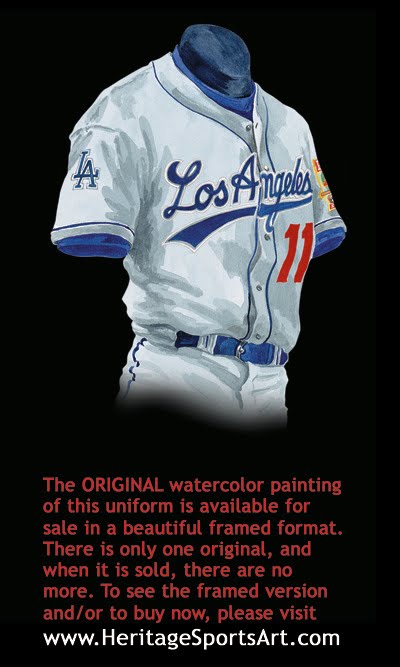
2004 Eric Gagne uniform. Worn during the playoffs in 2004. Notice the interlocking LA has moved to the left sleeve. The team lost to the Cardinals in the NLDS. The uniform since then has remained pretty much the same except for patches worn when a former star passed away, or major league milestones.
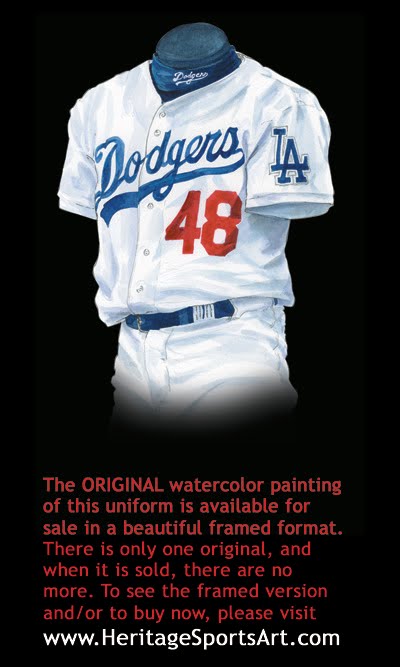
Players’ uniforms today are very collectible. I myself have several different jerseys. I have a 63 Koufax uniform. no name on the back as it should be, 55 Robinson, 88 Gibson World Series jersey, a camo Seager, Bellinger and Kershaw road jerseys, and an Adrian Gonzalez home jersey. I also have an old woolen Brooklyn jersey from 1935. Not real of course, that would be really expensive.
Retiring jerseys for Hall of Fame players is very in vogue. The Dodgers have retired numbers, 1, Reese, 2, Lasorda, 4, Snider, 19, Gilliam, 20, Sutton, 24, Alston, 32, Koufax, 39 Campanella, 42, Robinson, and 53, Drysdale. Robinson has the added honor of his number being retired across all of baseball. With his election over the weekend to the Hall, I hope the Dodgers afford the same honor to Gil Hodges of retiring #14. No disrespect to Kike, 14 will always be Gil’s number.
